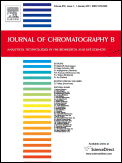
“Over the recent years, public and political opinions have demonstrated increasing support for the legalization of medical marijuana.
To date, 24 states as well as the District of Columbia have legalized cannabis for medical use, 4 states have legalized the recreational use of Marijuana.
Marijuana is derived from the hemp plant Cannabis sativa. Δ-9-tetrahydrocannabinol (THC) is the major psychoactive constituent of cannabis, while cannabidiol (CBD) is the major non-psychoactive constituent. THC is a partial agonist at CB1 and CB2 receptors, while CBD at high levels is an antagonist CB1 and CB2.
CB1 is abundantly expressed in the brain, and CB2 is expressed on immune cells (expression of CB2 on neurons remains controversial). The brain also produces endogenous cannabis-like substances (endocannabinoids) that bind and activate the CB1/CB2 receptors.
There is tremendous interest in harnessing the therapeutic potential of plant-derived and synthetic cannabinoids.
This Editorial provides an overview of diseases that may be treated by cannabinoids.”
http://www.ncbi.nlm.nih.gov/pmc/articles/PMC4948749/









